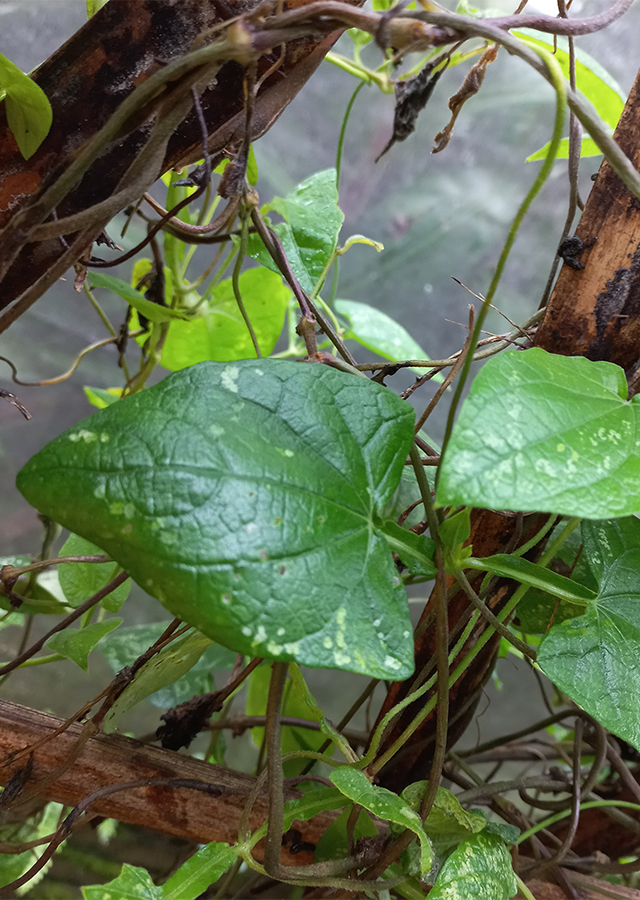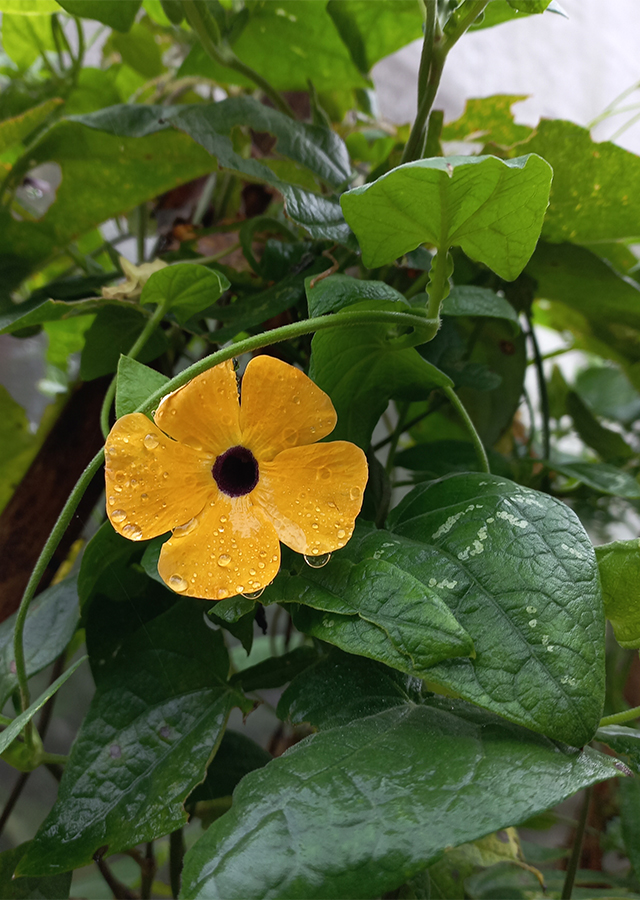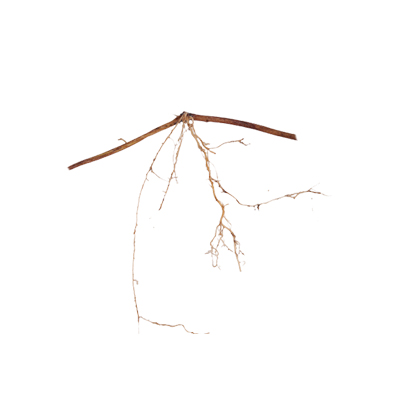Black-Eyed Susan
Thunbergia alata Bojer ex Sims
Acanthaceae
Location in our garden
Shading Area



Synonym
Thunbergia albiflora Gordon
Thunbergia aurantiaca Paxton
Valentiana volubilis Raf.
Habitus
Climbers. A fast-growing and long-lived vine, climbing, perennial plant, up to 5 m in height
Part Used
Leaves
Roots
Growing Requirements
Full Sunshine
Need Shade
Habitat
Riverbanks
Forest
Coastal
Roadside
Shrublands
Terrestrial
Overview
Thunbergia alata is native to tropical Africa, and distributed to Brazil, Hawaii, and Eastern Australia. It has been widely cultivated as an ornamental and is now and naturalized mostly in tropical, subtropical, and warmer temperate regions of the world. It is included in the Global Compendium of Weeds and it is also considered an aggressive invasive plant in Australia, Japan, Singapore, Costa Rica, Cuba, Puerto Rico, Brazil, Colombia, Paraguay, and numerous islands in the Pacific including Hawaii and French Polynesia. The plant is sometimes harvested from the wild for local use as a food, medicine, and children's toy. The leaves are edible; cooked and eaten as a vegetable. Fruits and seeds are used in souvenirs.
Vernacular Names
Anteojo de poeta (Spanish), Oeil de suzanne (French), Bunda-de-negro (Portuguese), Yi ye shan qian niu (Chinese), Chonga lota (India), Yahazu-kazura (Japanese), Swartoognooi (Afrikaans), Anteojo de poeta (Cuba).
Agroecology
Often found growing as a weed on riverbanks (i.e., riparian vegetation), in forest margins, plantation crops, roadsides, urban bushland, disturbed sites, and waste areas. In Fiji, T. alata is locally frequent from near sea level to about 900 m as a naturalized weed. Throughout Puerto Rico, it is especially common in moist disturbed areas, at lower to upper elevations. Grows best in mean annual rainfall of 500 - 2.500 mm, and mean annual temperature of 10 - 30 ºC. Requires full sun to partial shade. Rich, well-drained soil is best for fast growing.
Morphology
- Stem - slender stems which are green and hairy when young, cylindrical, puberulous.
- Leaves - opposite; blades 4.5-10.5 × 3.2-6 cm, ovate, lobed, chartaceous, the apex acute, the base subcordiform; upper surface dark green, dull, pubescent; lower surface pale green, dull, with prominent venation; petioles 4-8 cm long, winged, pubescent.
- Flowers - axillary, solitary; pedicels pubescent, 4-5 cm long; bracts green, ovate, pubescent, 1.5 cm long, covering the calyx and the corolla tube. Calyx yellowish green, with 12 filiform lobes, approximately 4 mm long; corolla orange, pale yellow, or less frequently whitish, infundibuliform, with 5 lobes, the tube approximately 2.5 cm long, narrow at the base, dark violet inside, the lobes approximately 2.5 cm long with the apex truncate, the limb approximately 5 cm in diameter; stamens with glandular hairs on the basal portion.
- Capsules - approximately 4 mm long, depressed-globose to 4-lobed at the base, the upper half in the form of a beak, dehiscent by two valves.
- Seeds - 2 or 4, 1.2-1.5 mm long, semicircular, reticulate.
Cultivation
Generative propagation is by seed, and vegetative propagation is by cuttings, fragments of stems and roots. In warm climates the plant can flower and produce seed all year round.
Chemical Constituents
Saponins, steroids, tannins, triterpenoids, flavonoids, glycosides, and phenolic compounds.
Traditional Medicinal Uses
- In India, the fresh root extract is used as a health tonic and an aphrodisiac.
- The leaves are applied to the head as a remedy for headache.
- Studies had showed antibacterial activity.
Part Used
Reference Sources
- Fern, Ken. (2021). Useful Tropical Database: Thunbergia alata. https://tropical.theferns.info/viewtropical.php?id=Thunbergia+alata. 10-11-2021.
- National Park of Singapore. (2021). Flora & Fauna Web: Thunbergia alata. https://www.nparks.gov.sg/florafaunaweb/flora/1/5/1518. 10-11-2021.
- Rao, Mudiganti Ram Krishna, Alam, Ayub, and Singh, Kumari Sangeeta. (2015). Preliminary phytochemical analysis of different extracts of Ruellia patula, Luffa aegyptiaca and Thunbergia alata. Journal of Chemical and Pharmaceutical Research, 7(10), (pg.315 -320).
- Sandoval, J.R., Rodríguez, P.A. (2019). Invasive Species Compendium: Thunbergia alata. https://www.cabi.org/isc/datasheet/53646#toPictures. 10-11-2021.
- Sultana K.W., Chatterjee S., Roy A., and Chandra I. (2015). An Overview on Ethnopharmacological and Phytochemical properties of Thunbergia sp. doi:10.4172/2167-0412.1000217.

